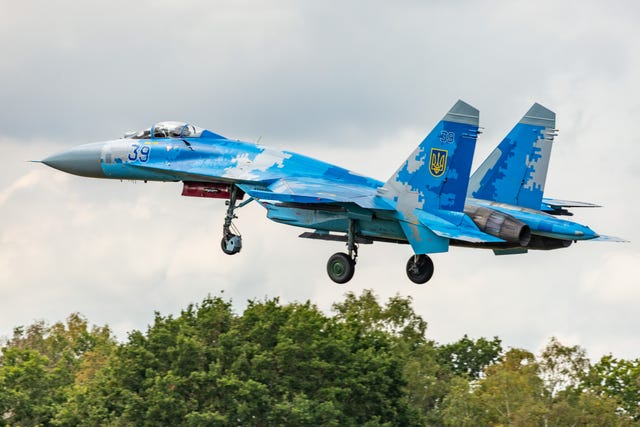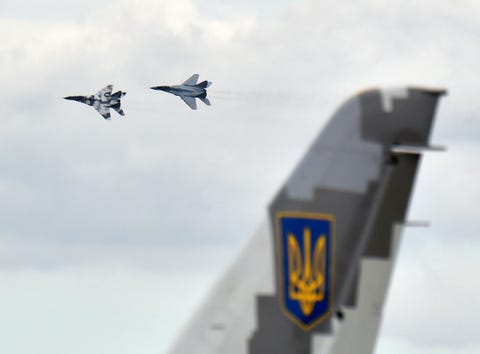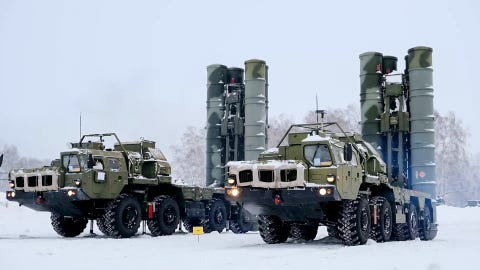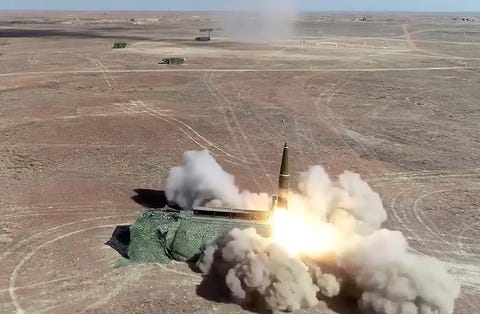If an all-out conflict breaks out in Ukraine, the country’s minuscule air force would most certainly collapse. Moreover, the Ukrainian Air Force would be demolished from the outset due to Russia’s substantial advantage in fighter planes, strikers, and ground-based missiles.
Russia has to establish air superiority early on, which it can do against Ukraine alone, but NATO’s involvement would upend Moscow’s chessboard. In a conflict, here’s everything you need to know about Russian, Ukrainian, and NATO’s air forces.

Only 69 fighter jets are in service with the Ukrainian Air Force. There are 43 Mikoyan-Guerevich MiG-29 “Fulcrum” multi-role fighter-bombers and 26 Sukhoi Su-27 “Flanker” air superiority fighters. Ukraine has never acquired a new fighter plane, and all of its fighter jets are at least 31 years old. Ukraine’s failure to obtain the latest upgrades and replacement components for both planes made by arch-enemy Russia exacerbates the aging issue. The number of Ukrainians involved is unknown. It’s unclear how many of Ukraine’s warplanes are capable of flight.

Kyiv has upgraded some MiGs and Sukhois. However, the number of upgraded aircraft is low. In 2020, Ukraine launched a new air force spending plan, Vision 2035, which anticipates buying $12 billion in new aircraft, including fighter jets likely bought from NATO countries.

Ukraine also maintains a limited arsenal of attack-and-strike jets, comprising 12 Su-24 “Fencer” fighters and 17 Su-25 “Frogfoot” close air support planes. In addition, the Army has 34 Mi-24 “Hind” combat helicopters. These planes, however, are rather old, which makes them extremely difficult to maneuver.

Russia has a much more extensive aerial fleet than Ukraine. The country has 1,000 fighters, fighter-bombers, and striking jets at its disposal. In addition, Moscow has modernized many of these planes, including improved Su-27SMs and Su-35 “Flanker-E.” jets. Unlike Ukraine’s Su-27s, Russia’s Su-27s have modified air-to-air radars, cutting-edge controls, and upgraded air-to-air and air-to-ground missiles.

However, airpower is not restricted to fighter aircraft. Russia has stationed S-400 long-range surface-to-air missile systems along the Russia-Ukraine and Belarus borders. The S-400 can engage planes, drones, cruise missiles, and even ballistic missiles with a range of 248 miles.
Furthermore, Russian tactical ballistic missiles such as Iskander-M missile would target Ukrainian command and control centers, supply depots, marshaling sites, and, most importantly, airbases. According to sources, Russian Iskander brigades located in Russia, Belarus, and captured Crimea can fire up to 448 missiles each hour, striking 95 percent of Ukrainian territory. Iskander-M has a 310-mile range and can carry a 1,543-pound nuclear warhead.

The Ukrainian Air Force is in a precarious position in the event of a crisis. Russian ground forces may take Ukrainian air bases, particularly between the Dnieper River and the Russian border. Within the first 24 hours of the battle, Ukraine’s air force is projected to be decimated. The only way to tilt the dynamic of air superiority is for NATO to intervene. NATO air forces are currently focused on defending the airspace of NATO nations bordering Ukraine, particularly Poland, Romania, and the Baltic States of Lithuania, Estonia, and Latvia. If NATO intervenes, a swarm of jets, including the F-22 and F-35, would arrive in Ukraine, and bombers will fly in from far-flung locations throughout the continental US. In such a case, Russia’s air superiority in the Ukraine battlefield may be quickly lost, and its ground soldiers might be severely battered from all sides.
If a conflict breaks out, Russia will quickly seize control of Ukrainian airspace, and no one will stop it. The only relief for today’s Ukrainian Air Force is that if the country lives as an independent state, international aid will most likely ensure that the country’s air defense is significantly more powerful in the future.


